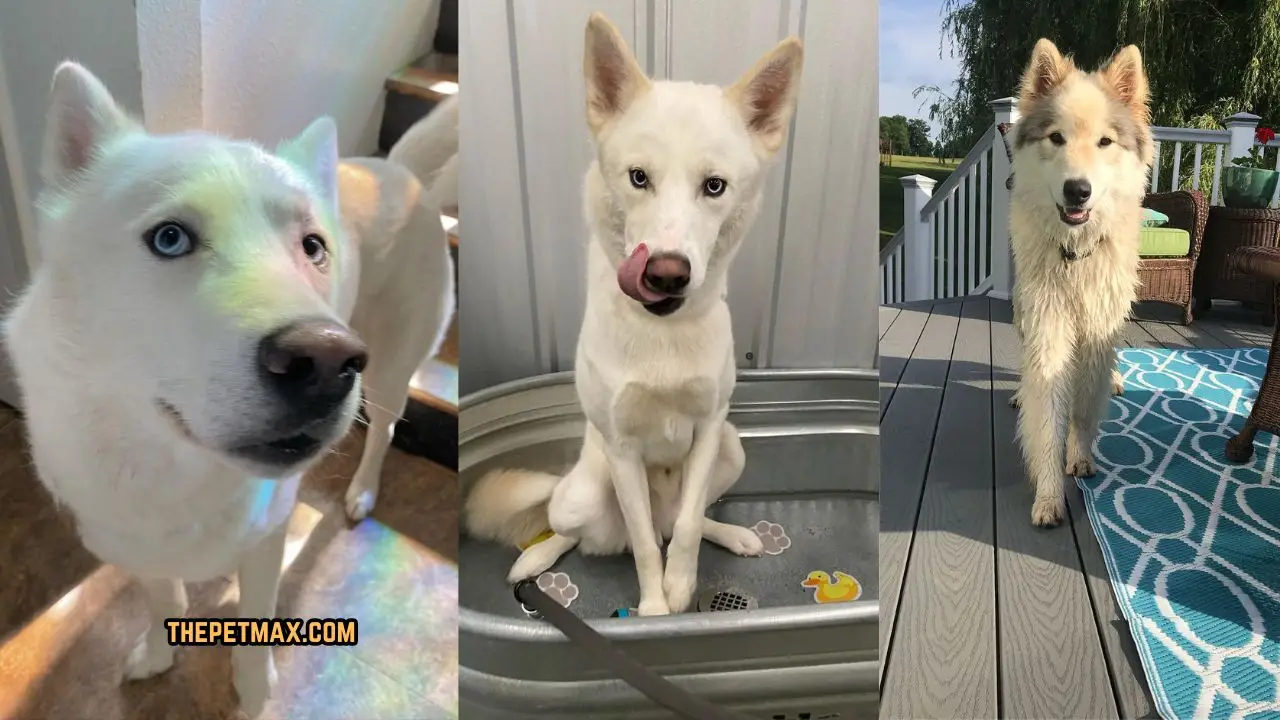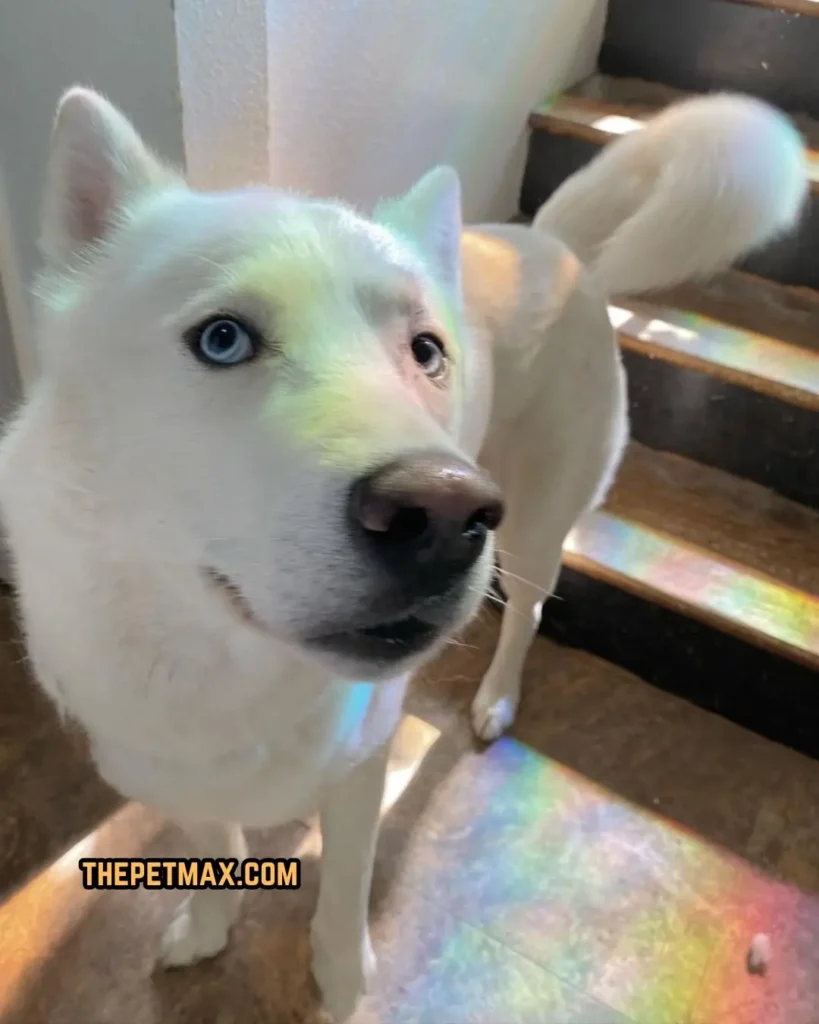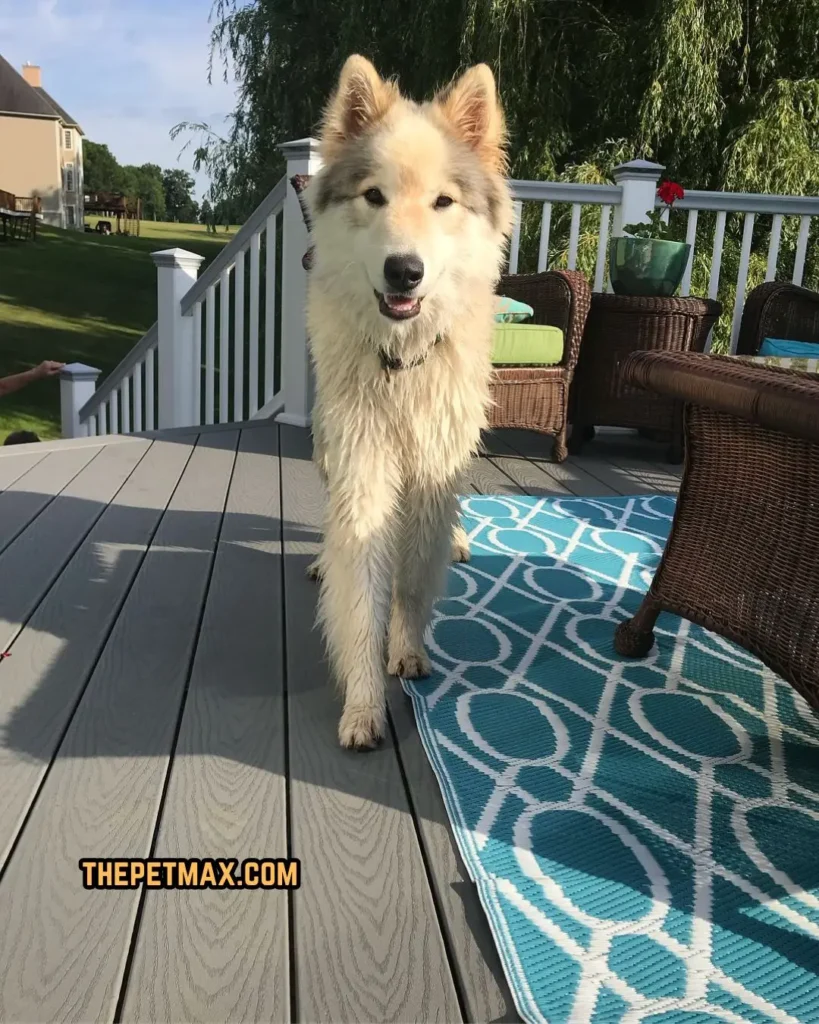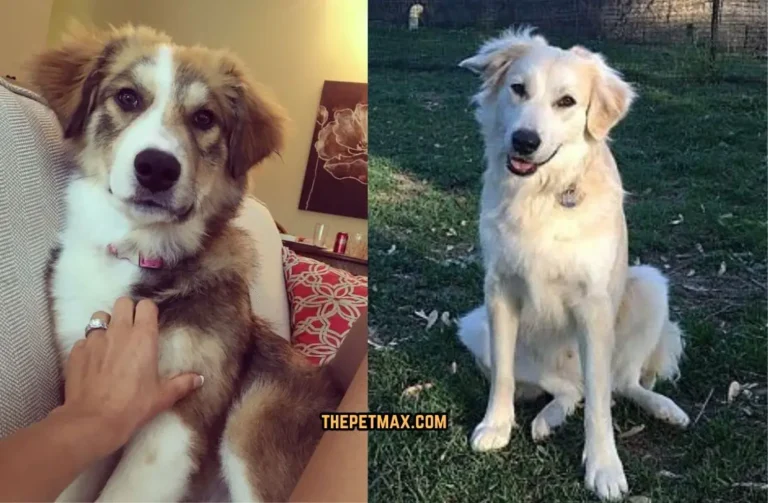Mackenzie River Husky Dog Breed Guide

The area of the Arctic from where the Mackenzie River Husky got its name. It may grow to appear more huge and some examples weigh more than 100 pounds. Having long hair lets it survive the cold and makes a great sled dog. Even in deep snow, its strong body has excellent grip due to its structure for heavy freighting.
They are a crossbreed of Newfoundlands, Staghounds, St. Bernards, and Wolf, which are native sled dogs. They have always been termed classic sled dogs while being a mixed breed.
Contents
- 1 History of Mackenzie River Husky:
- 2 Some Quick Facts about Mackenzie River Husky:
- 3 Mackenzie River Husky Dog Breed Overview & Appearance:
- 4 Temperament of Mackenzie River Husky:
- 5 Are Mackenzie River Husky Good Family Dogs?
- 6 Are Mackenzie River Husky Good with Other Pets?
- 7 Food and Diet Requirements of Mackenzie River Husky:
- 8 Exercise Needs of Mackenzie River Husky:
- 9 How to Train Mackenzie River Husky:
- 10 Grooming Needs of Mackenzie River Husky:
- 11 Common Health Problems of Mackenzie River Husky:
- 12 FAQ’s:
- 13 Conclusion:
- 14 Related Posts:
History of Mackenzie River Husky:
Robert Peary was the very first man to reach the North Pole and there he had to deal with a huge number of sled dogs and failed to differentiate one type from another. He stated that treating all sled dogs as variations of a single big breed would be better.
The demands for sled dogs were uniform, but many local bred dogs received the name of the area in which they were discovered, and their looks also varied. The Ft. McPherson Dogs, The Hay River Dogs, The Old Crow Dog, The Arctic Red Dogs, and other names belong to them.

Donna Dowling, an Alaskan, got a different conclusion from her own research. She pointed out that the hybrid dog described in the following line was the Mackenzie Hound, a more city dwelling dog that was quite different from the classic Arctic sled dog breed she was familiar with is the Mackenzie River Husky.
These long legged dogs, also known as Porcupine River dogs, may have got the name from strangers who were unable to tell the difference between freight huskies from different towns.
A perfect storm which started in the 1960s led to the Mackenzie River Husky’s close to extinction. The Canadian government’s mass killing of dog teams under the cover of eradicating rabies, and increased profits from sled dog racing that resulted in different ‘trends’ in sled dogs.
In an attempt to keep the original Mackenzie and avoid it from disappearing, Dowling looked for any surviving dogs. Some were living in remote regions of the Alaskan interior, and some were with serious mountain individuals, based on what she found. We have no idea how she currently deals with trying to keep these freight dogs from being extinct.
Some Quick Facts about Mackenzie River Husky:
- They lost their populace to snowmobiles
- Mackenzie River Huskies are very rare
Mackenzie River Husky Dog Breed Overview & Appearance:
The thick double coat of the Mackenzie River Husky may vary from white to black, and hints of brown and gray in between. Its ears are sharp and standing up, and its eyes are often blue or brown. The Mackenzie River Husky has a large chest, muscular legs, and an athletic physique.
The Mackenzie River Husky has an estimated lifespan of 12–16 years, measuring 22–26 inches tall at the shoulder and weighing 50–70 pounds on average. They come in a variety of colors, such as wolf gray, white, cream, red, sable, white, and gray.
| Height | 66 to 75 cm |
| Weight | 30 to 47 kgs |
| Lifespan | 12 to 16 Years |
| Temperament | Intelligent, dominant, trustworthy, and eager |
| Litter Size | 4 to 10 |
| Group | Working Dog |
| Size | Large |
| Colors | Black, white, tan, cream, blonde and red, gray and sable |
| Coat | Medium Length to Long dense |
| Shedding | Moderate |
| Puppy Price | $1000 to $1500 USD |
Temperament of Mackenzie River Husky:
When coupled together, the Mackenzie River Husky may be confused for its Russian sled dog cousin, the Siberian Husky. You will notice unique characteristics from growing both dogs. The Mackenzie River Husky is more friendly than the Siberian Husky, who looks a bit reserved.
Alaskans depended on the Mackenzie River Husky, a reliable sled dog, for their transportation needs during the 1800s and 1900s. These Huskies were sufficiently self-sufficient to survive in situations where their supplies of food were limited. They claim their supremacy as leaders by pulling sleds in groups. They have intelligence as well as an urge for learning.
Are Mackenzie River Husky Good Family Dogs?

They are famous for their friendship since their days in Alaska’s harsh backcountry. They developed great relationships with their owners, who they see as the supreme pack leader and alpha dog, knowing that they were employed to pull cargo across mountains in the deep winter.
Mackenzie River Huskies of today love their owners and their family. They enjoy the company of youngsters and are guardians but they are also good with strangers. With a lack of sensing danger, they are neither hostile nor temperamental with strangers. They are great pets since they are friendly, social, playful, and active.
Are Mackenzie River Husky Good with Other Pets?
Dog meetings at parks and meeting new dogs at the veterinarian or grooming parlor are not difficult for Mackenzie River Huskies.
But these dogs grow best when they’re the family’s alone pet. About cats and other smaller pets, we cannot say the same thing. These Huskies would need deep training and socialization to be able to get along with other smaller animals because of their high prey drive.
Food and Diet Requirements of Mackenzie River Husky:
With the facts above, feeding your Mackenzie River Husky properly is essential to maintain its health and welfare.
Two to two and a half cups of premium dry food should be provided to an adult dog twice a day. Many meals designed for humans are not good for dogs, so be careful.
Therefore, before giving your dog any human food, do careful study or consult your veterinarian. These huskies have a poor tendency for weight growth.
Exercise Needs of Mackenzie River Husky:
This husky can no longer be relied upon as a sled dog due to excessive sleeping and a little slumber. Remember that these dog breeds were bred for movement in the most adverse conditions, which means their active nature and active lifestyles are deeply rooted in them.
These dogs want to be active but they don’t see exercise as a method to stay in shape like an athlete sees gym sessions.If they are not given the chance to release their energy, it may have a psychological impact on them.
We advise regular walks and outside activities to keep your dog happy and healthy. As huskies have a strong tendency to go lost, always keep your dog on a leash whether on public land or the road.
How to Train Mackenzie River Husky:
Everybody wants an animal that behaves well, but getting one needs training, which takes your time and work. The sensitive nature of Mackenzie River Huskies is high. These dogs don’t react well to punishment, so be careful when building firmness during training sessions. Huskies are easy to train as long as you take control of the pack.
They are prepared to pay attention to instructions and react immediately. Because they are clever dog breeds, they may learn orders after 15 to 25 trials. They are not suitable for first time pet owners, These Huskies often have characteristics of wolves. If you fail to leave a mark on them as the superior dog, they may choose to depend on their brains.

The first time owners might not have the firmness, fearlessness, and calmness needed of a husky pet parent. While Mackenzie River Husky are friendly toward strangers, keep in mind that they are animals and may behave easily.
A socialized well River Husky is more unlikely to bite and less likely to attack. Early socialization and training help in your dog’s understanding of its limits in public. At a very young age, socialize your dog by introducing them to humans, other dogs, and other pets. When they don’t see the third person as a threat, they are less likely to attack.
Grooming Needs of Mackenzie River Husky:
You must work very hard to keep your dog in excellent condition even if grooming your husky does not cost the earth. Regular brushing is necessary for reducing the excessive shedding of Mackenzie River Huskies.
While professional grooming is not required, the skills of a groomer may make your dog appear like it has just been taken out of the bandbox. While you should not daily bathe these huskies, you should give them a wash every six to eight weeks at the very least. As you give your dog a wash, you can look for fleas, wounds, lumps, and other skin issues.
It is necessary to keep your dog’s paws, eyes, nails, and ears clean. The dirt that collects in the holes and corners of these body parts over time can lead to diseases. Because of their hair, Mackenzie River Huskies tend to attract fleas. Treatment for fleas during the right season is therefore important.
Common Health Problems of Mackenzie River Husky:
Your Mackenzie River Husky might have common health issues that all dogs are prone to. Among the most common health issues that this particular dog breed may face are hip dysplasia, cataracts, and hypothyroidism.
Hip Dysplasia:
This is just another really common Huskie issue and if your Mackenzie is a working dog, it’s almost a death sentence because it may cause lameness. The illness can result in hip joint issues that can be quite painful and exhausting for your dog.
It can affect many young dogs in addition to elderly dogs. Surgery may be required at times for treatment, but there are other non-invasive options. Avoiding letting your pet gain weight is important because it could give rise to hip dysplasia in the animal.
Cataracts:
Many people believe that dog cataracts are a sign of getting older, but there are really a number of medical causes for this condition. It is possible for cataracts to begin as early as six months of age, but this is uncommon. They develop as a result of an illness that damages the eye’s lens and makes it less transparent.
Your dog’s eyes will have a white or gray color, which could actually make it harder for them to see. Dogs who have diabetes are particularly prone to cataracts. Regular veterinarian checkups of your dog’s eyes might be helpful.
FAQ’s:
Do Mackenzie River Huskies bark a lot?
Sometimes Mackenzie River Huskies will bark, but depending on how angry they are, their barking may be quite loud. They may bark for a variety of reasons, such as seeking attention, separation anxiety, greeting, and alertness.
Do Mackenzie River Huskies have a high prey drive?
Absolutely, Following their route through Alaska’s deep snow, Mackenzie River Huskies developed a strong prey drive as they searched through the dense snow for food.
Conclusion:

Raising the most famous northern sled dog may be a fantastic memory. But you have to spend time and money on your dog’s health. While Mackenzie River Huskies can be highly sensitive, demanding, attention-seeking, and hard to housetrain, they are usually healthy, trainable, sociable, and pleasant dogs.
The Mackenzie River Husky is not a good choice if you aren’t going to spend a lot of time with your dog. Those who work long hours or are first-time pet owners shouldn’t think about these dogs.




